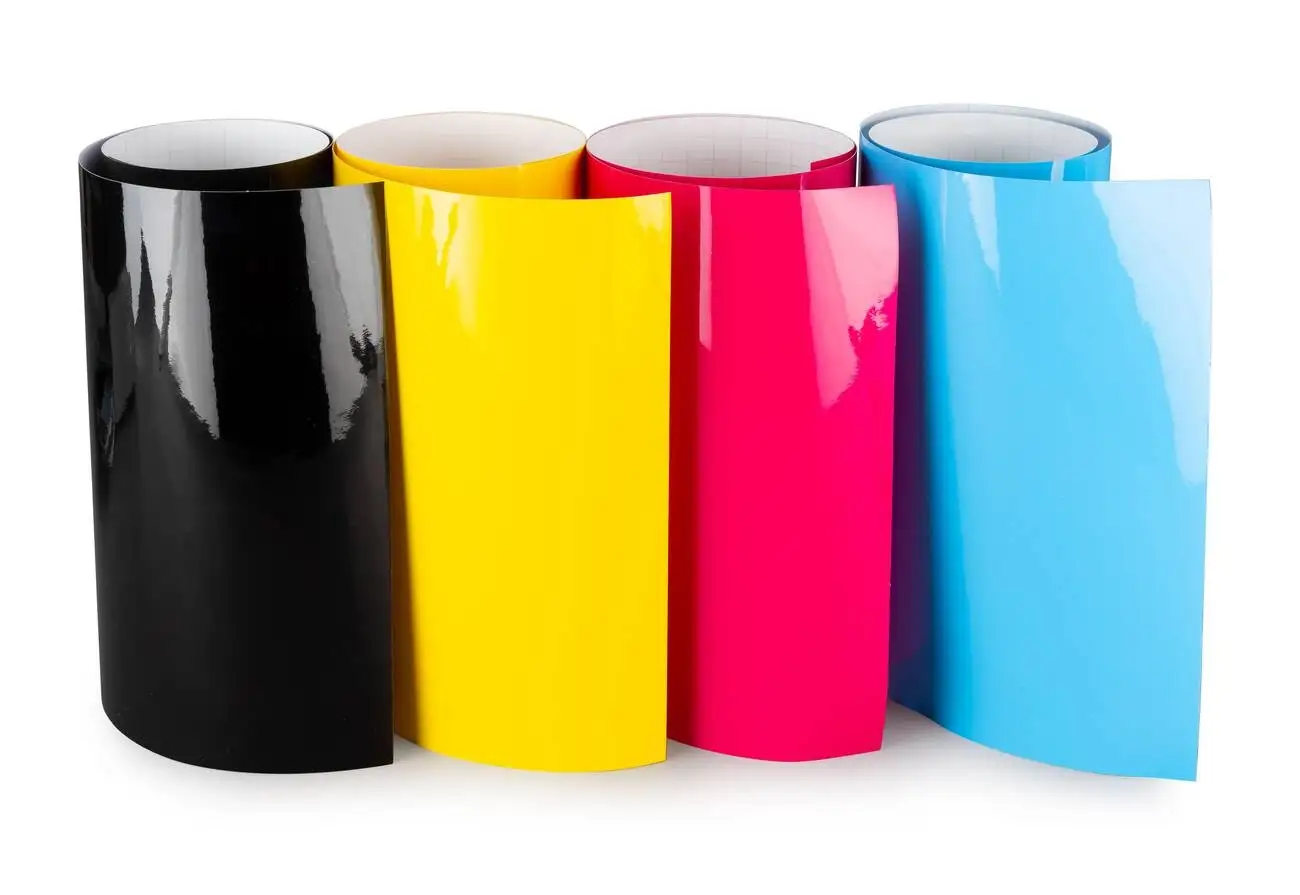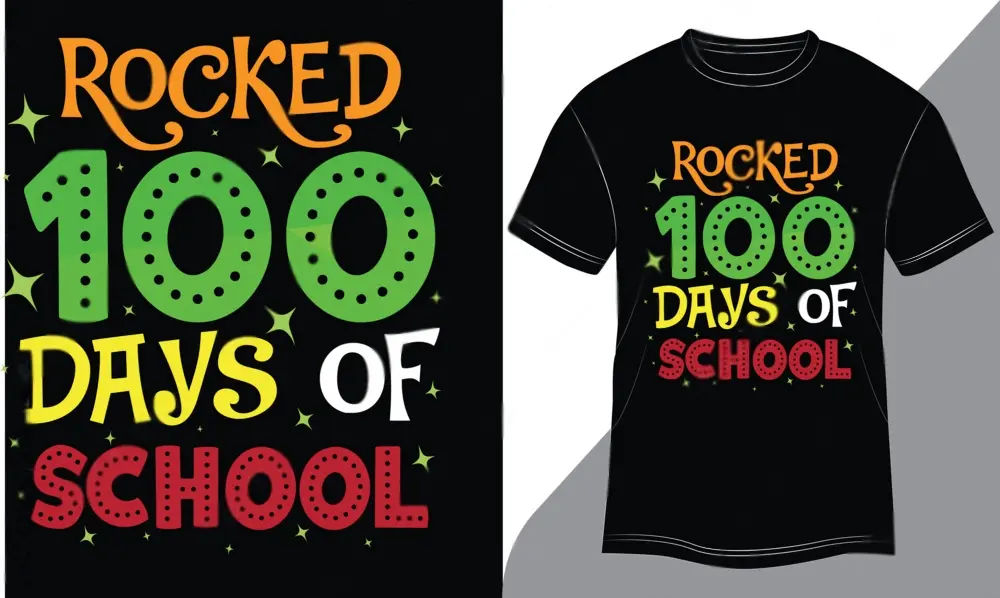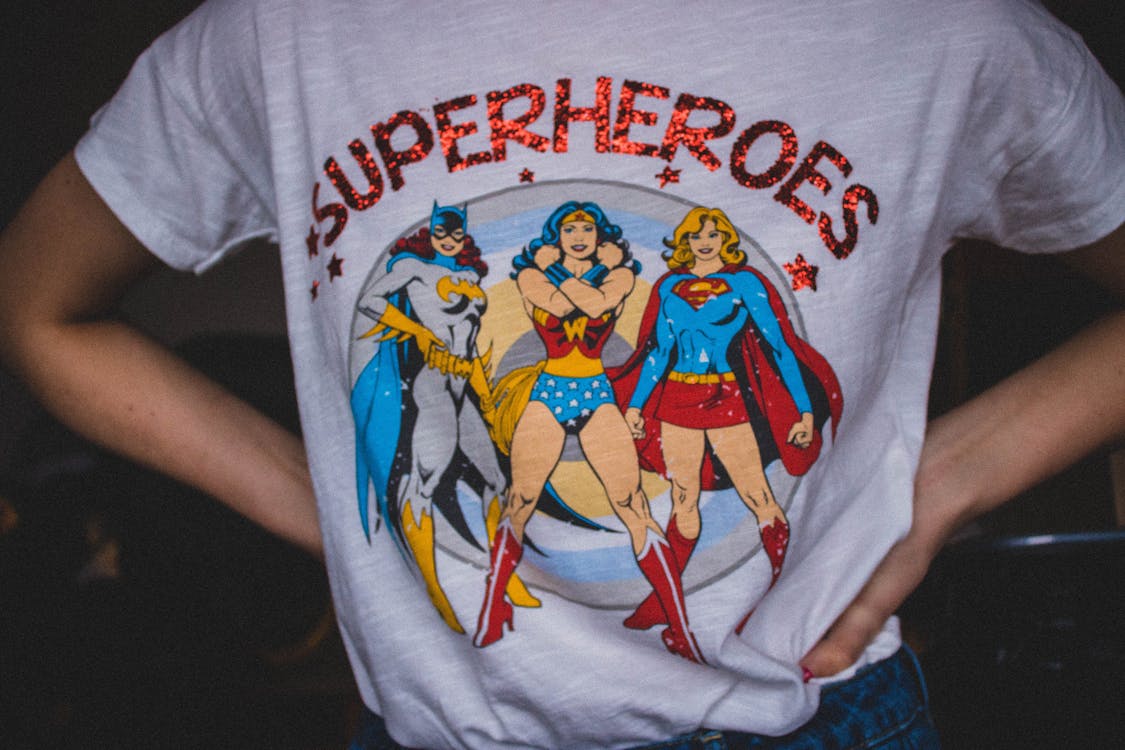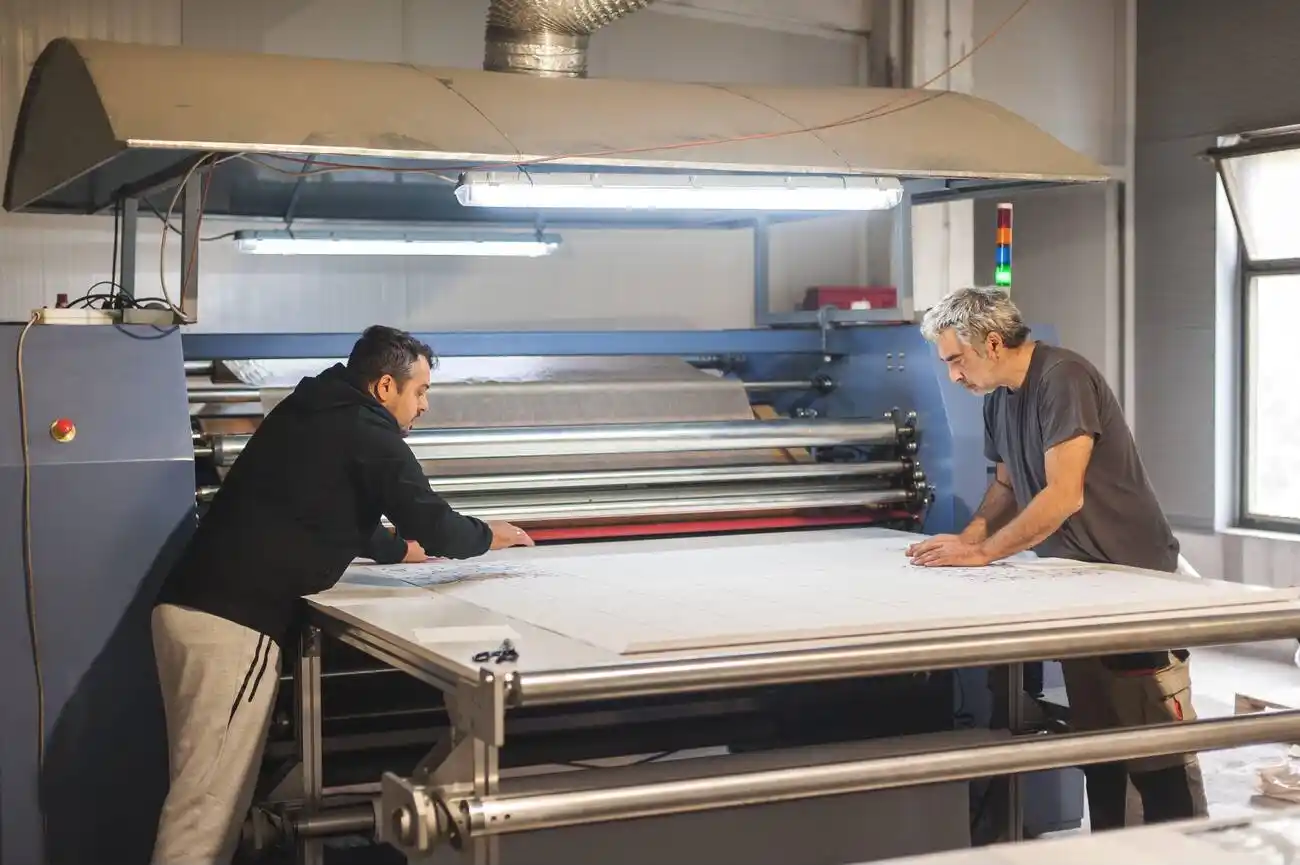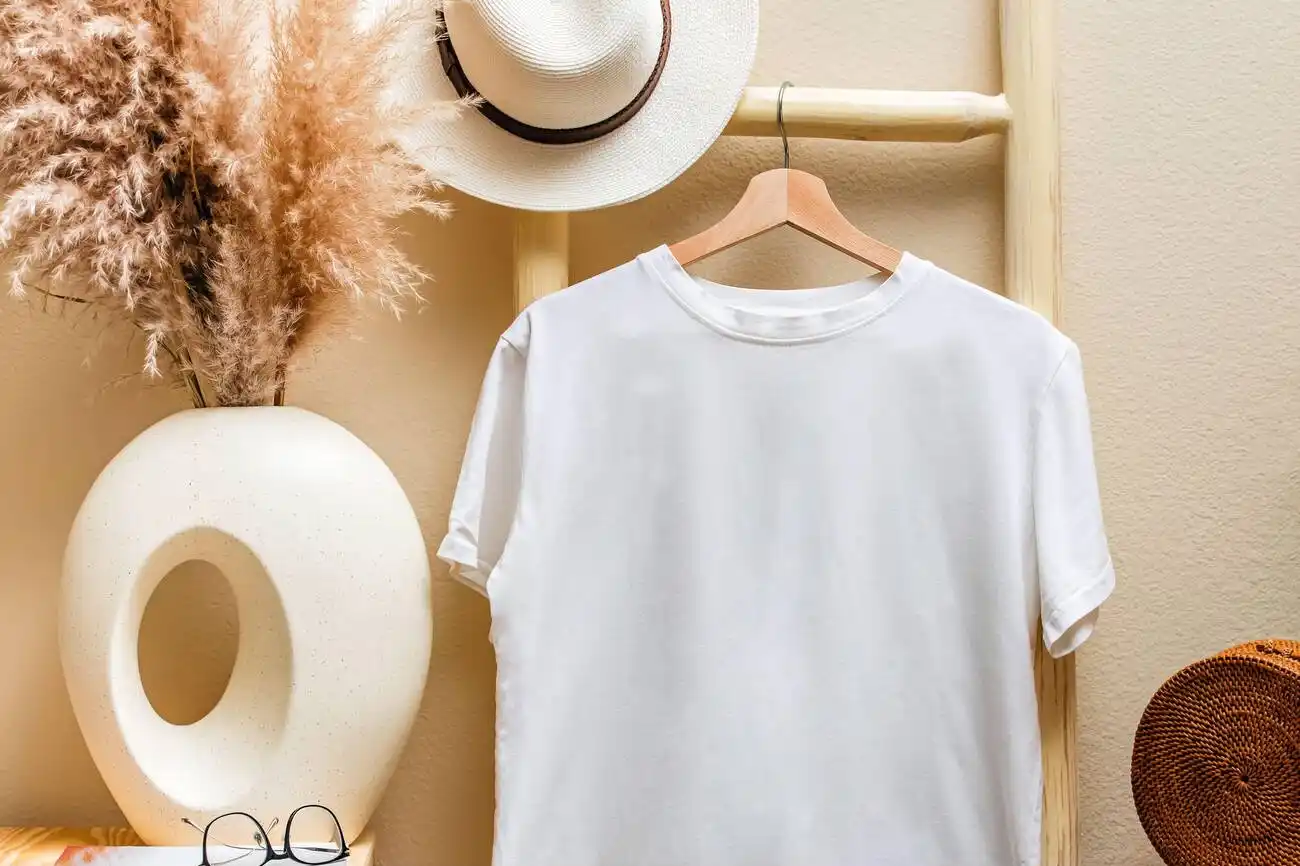While it may be difficult to tell the difference between adhesive and Heat Transfer Vinyl for a newbie in the world of crafting, we’re here to tell you everything you need to know to set the two apart. From their application process to purpose, they’re quite different. This article will walk you through their differences, individual characteristics and uses.
We’ll give it to you straight, the main difference between adhesive and heat transfer vinyl is the backing. Adhesive vinyl comes with a paper backing, which when peeled off, exposes a sticky side which is pasted on the material of choice. Heat transfer vinyl, on the other hand, comes with a smooth backside which isn’t sticky. It’s printed using heat and pressure, which activates it.
Here’s a more in depth explanation on the two.
What is Adhesive Vinyl?
If we were to put it simply, think of adhesive vinyl as sticker paper which comes in different colors and prints. Adhesive vinyl comes in two options, removable and permanent. An outdoor project would be better suited for permanent adhesive vinyl, while removable vinyl can be used for bottles and mugs so you can switch them up often.
Adhesive vinyl is made up of two different parts, a shiny top coat which has an adhesive backing, and a paper lining. The paper lining is essentially so that it doesn’t go around sticking to the wrong things.
What is Heat Transfer Vinyl?
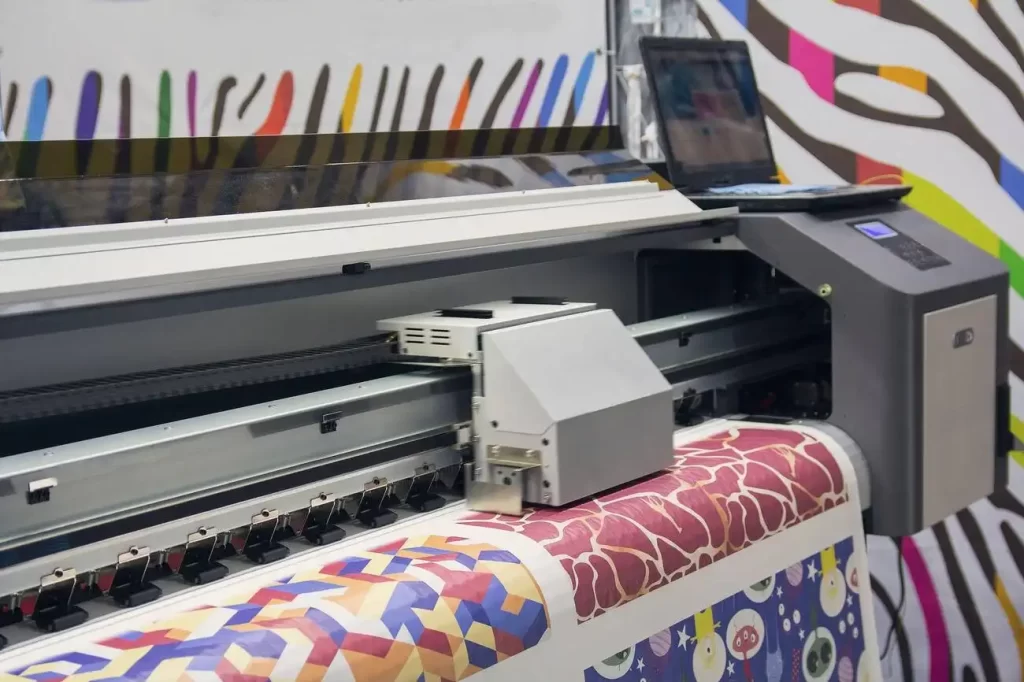
Heat transfer vinyl, also commonly known as iron-on vinyl, is a heat-sensitive adhesive which comes in several different colors, designs and patterns. Much like adhesive vinyl, heat transfer vinyl too is made up of two different parts. It contains a carrier sheet which is clear, and a heat-transfer material.
The carrier sheet doesn’t get damaged by heat, which means you can easily heat press on it without damaging your print.
Adhesive Vinyl Vs. Heat Transfer Vinyl
While adhesive and heat transfer vinyl do serve similar purposes to a certain extent, they differ in the way they work and the material they’re compatible with. A general rule of thumb to tell them apart is to focus on the carrier sheet. Adhesive vinyl often features a grid-like patterned backing which when peeled away reveals a sticky side. Heat transfer vinyl, on the other hand, comes with a protective carrier sheet.
Here’s when you should use each of them:
When Should You Use Adhesive Vinyl?
Adhesive vinyl, while great for several different types of materials, works best with smooth, hard surfaces. This includes ceramics, pots, mirrors, windows, plastics and more. If you’re looking to print a weirdly shaped object, it’s safe to say that adhesive vinyl is your best bet.
When Should You Use Heat Transfer Vinyl?
Generally, all types of heat transfer vinyl work really well with almost all kinds of fabric, especially cotton, polyester and poly/cotton blends. However, some heat transfer vinyls work better with particular materials.
For example, if you’ve opted for a metallic look, you want to use something that’s stiffer so that the design can hold. Similarly, if you’re into stretch vinyl, you want to use something that can stretch along with the design, such as ribbed fabrics.
Differences Between Their Applications
Not only do adhesive and heat transfer vinyl differ in their characteristics, but they also differ when it comes to applying them. With heat transfer vinyl, you need to make sure that you cut with the shiny side down, which helps in mirroring the design. Once you’ve cut and weeded, place the design face flat on your desired material and use a heat press to evenly distribute heat and pressure. Make sure to peel only once everything’s cooled down.
Adhesive vinyl printing is not as much of a tedious process as heat transfer vinyl is. All you need to do is cut and weed your design, remove the paper backing and paste it onto your material. You can then use a scraping tool to ensure it’s all flat and that there aren’t any air bubbles.
Denver Sign Supply — Your Partner in Craft
Whether you end up choosing adhesive vinyl or heat transfer vinyl for your printing project, you can find both options and other helpful tools such as cutters, printers and heat presses at Denver Sign Supply. We take pride in providing quality wholesale materials and have been reliable allies to many printing businesses for several years. If you’ve got a project in mind, head on over to Denver Sign Supply to find everything you need for it.

